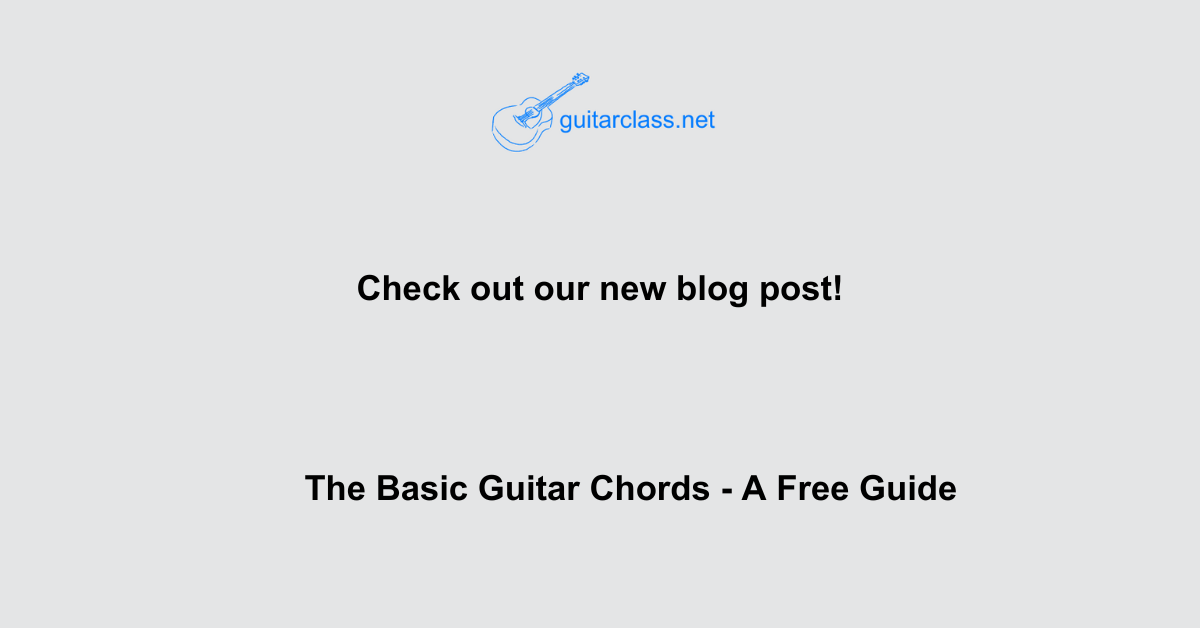Intro
Basic guitar chords are the bread and butter of rhythm guitar playing. As a new player, you may have been looking for the most common chords to learn. There’s no need to look any further because I have compiled a list complete with the chord diagrams, fingerings, and descriptions just for you. If you read to the end, you will even find a printable chord poster free to download.
Table Of Contents
C Major

C major is a very common chord that you will use constantly. Its relatively easy to get the fingering down and feels comfortable under the fingers. Learn this one quickly and learn it well because you will likely play the chord in some way every time you pick up a guitar.
C major must have the notes: C, E, and G.
G Major
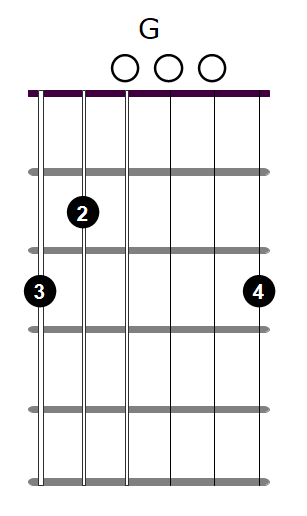
Learning a G chord should be at the top of your list of things to do! G chord is an absolute staple of guitar music. So many songs have the chord. If you are going to be able to play any songs you need to know G.
Some familiar tunes in G include: “Take It Easy” by The Eagles, and “Take The Money And Run” by Steve Miller Band.
G major must have the notes: G, B, and D.
D Major
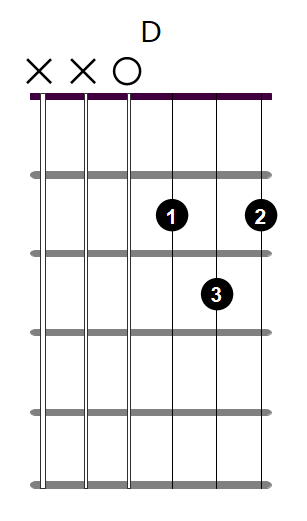
D is another must-have guitar chord.
It shouldn’t take too long to get a handle on this one. D is extremely common among guitarists. So common in fact that you should take the time to get very good at making this chord. According to Spotify, D major is the third most popular key used in all songs.
You will find a ton of pop songs in D major, and hard rock and blues songs as well. D is also a very popular key for hard rock and blues music. “Everlong” by the Foo Fighters is in D.
D major must have the notes: D, F#, and A
F Major
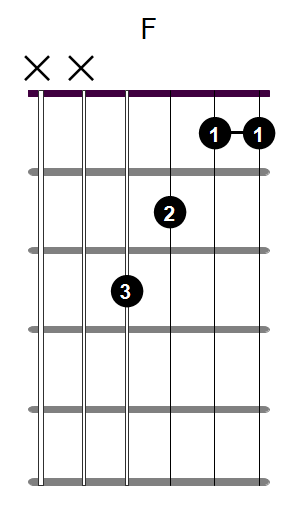
F is one of the most difficult chords to learn on this list. It requires you to have strength in the fingers that you may not have developed yet. But don’t be discouraged because you can get this chord under your belt with time and practice.
Before you know it you will be playing “Free Fallin” by Tom Petty. The chord can produce a mood that is optimistic and that is often a good thing!
Some composers find the key very usable and a good base from which to launch in many different directions.
F major must have the notes: F, A, and C
E Major
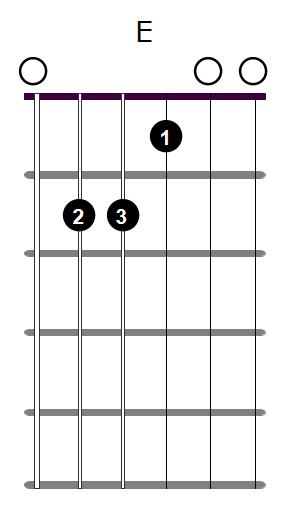
E is just one of those chords that suits the guitar’s voice well. It also suits many men’s voices well. Think Johnny Cash and many of the old Country singers.
Some words or phrases that accurately describe the E major key are “joy,” “delightfulness,” and “ready to fight.”
Some familiar songs in E include “Peaceful Easy Feeling” by the Eagles and “You Don’t Know How It Feels” by Tom Petty.
E major must have the notes: E, G#, and B.
A Major
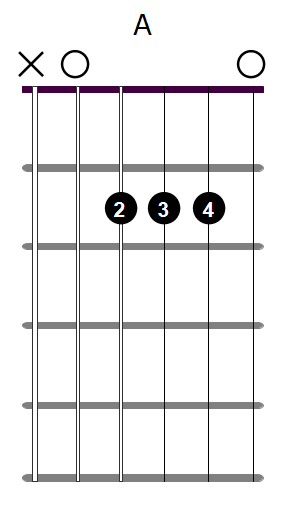
A is probably a little easier than C and is quite useful. It’s used extensively in country music as well as rock and pop. It is also right at home in blues music. Many popular blues and classic rock songs are in the key of A so this is one you want to learn upside down and inside out.
A major must have the notes: A, C#, and E.
E Minor
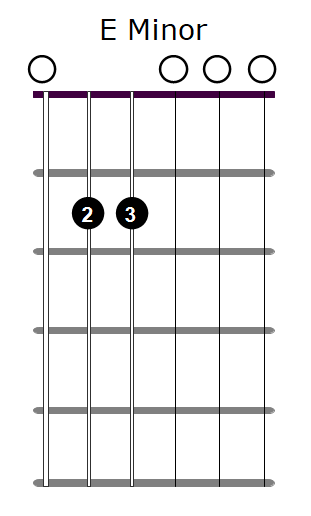
E minor is fun and easy to play and has a very familiar sound. It can sound very emotional and melancholy.
It produces a “moody” sound that suits the attitude and natural tone of an acoustic guitar. Most of the strings in the E minor chord are left open (not fretted).
Some familiar songs in E minor include “All Of Me” by John Legend and “Animals” by Maroon 5.
E minor must have the notes: E, G, and B.
A Minor
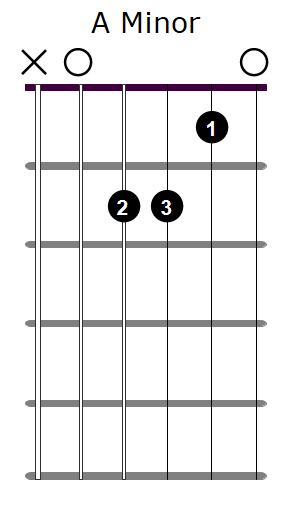
What is the first thing that comes to mind when you hear A minor? Hotel California? Classical guitar? Seduction? A minor is all of the above. It’s entirely necessary in your chord vocabulary.
Its relative minor relationship with C major ensures that it will be used always and forever.
The fingering includes an open A string, an open high E string, and close finger groupings on strings 2, 3, and 4.
Some familiar songs in A minor include “One” by U2 and “Losing My Religion” by REM.
A minor must have the notes: A, C, and E.
D Minor
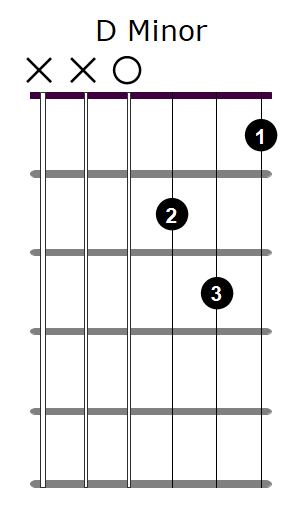
Adjusting to this one shouldn’t take too long, even though it might feel a little unusual at first try.
The chord has a melancholy mood and a sense of tragedy. Classical composers were very fond of this key. J.S. Bach (The Art of the Fugue), and Mozart (Requiem) are good examples. Beethoven also wrote “Symphony No.9” in D minor.
Some popular rock songs in D minor include “Come Together” by The Beatles and “Outshined” by Soundgarden.
D minor must have the notes: D, F, and A.
B Minor
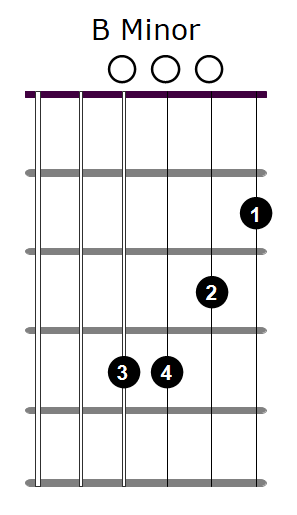
This is a great chord that is used frequently, but also because its “shape” is very useful. This shape can be moved up and down the neck to play in different keys.
This chord takes some practice to play it well but it’s well worth it.
Some familiar songs in B minor include “Here Without You” by 3 Door Down and “Hotel California” by Eagles.
B minor must have notes: B, D, and F#.
B7
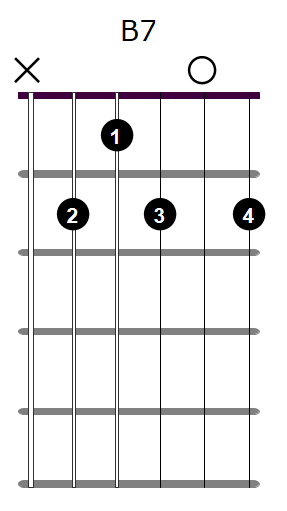
B7 is another chord that you may find in many Country songs and bluesy classic rock songs. It does take some practice getting this one right so there is no better time than now to get started with this chord.
B7 must have the notes: B, D#, F#, and A.
D7
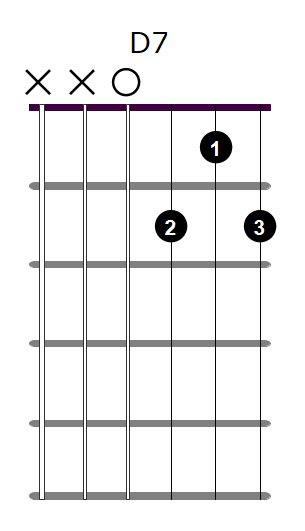
D7 is a great chord to throw in when you are playing in G. D7 is the dominant 7 chord or G major.
Some familiar songs that use D7 include “Pride and Joy” by Stevie Ray Vaughn and “Red House” by Jimi Hendrix.
D7 must have the notes: D, F#, A, and C.
A7
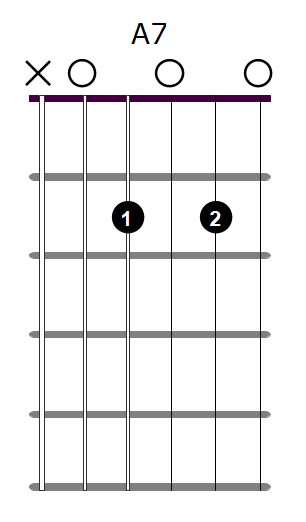
A7 is another great usable chord for your repertoire! It is used quite often in popular music and provides a good contrast between an A minor and A major chord. It is relatively easy to play resulting in a quick learning time.
A7 must have the notes: A, C#, E, and G.
Conclusion
Now you can enjoy this free basic guitar chord poster!
Now try using these chords while strumming these additional strumming patterns. If you want to seriously improve your practice routines, check out my article 5 Ways to Make Your Guitar Practice More Productive.
These are thirteen chords that you will see and play often. If you would like to have more basic guitar chords in a book format I recommend Mel Bays Guitar Chords.
Don’t forget to join our mailing list to receive exclusive content. If you enjoyed this article, consider buying me a coffee!
